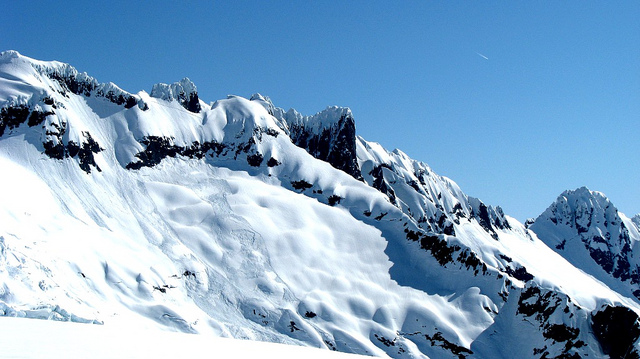|
1968 Biały Jar Avalanche
The avalanche in Biały Jar occurred on 20 March 1968, sweeping away 24 people who were walking along the bottom of in the Giant Mountains. Five of them, who were thrown aside by the avalanche, managed to survive. The remaining 19 people – including 13 Russians, 4 citizens of East Germany, and two Polish citizens – lost their lives. The rescue operation was conducted by the Polish Mountain Volunteer Search and Rescue, Czech rescuers, and volunteers. A total of 1,100 people took part in the operation. The last bodies of the victims were found only on 1 and 5 April. Origins and course The weather conditions during the first decade of March were relatively stable – no winds, high levels of sunshine, and temperatures around zero degrees. All of this contributed to the melting of a not very thick snow layer. The water from the melting snow seeped into the thick layer of ground (disintegrated granite rubble and some larger blocks). Additionally, the ground was soaked by the cr ... [...More Info...] [...Related Items...] OR: [Wikipedia] [Google] [Baidu] |
Avalanche
An avalanche is a rapid flow of snow down a Grade (slope), slope, such as a hill or mountain. Avalanches can be triggered spontaneously, by factors such as increased precipitation or snowpack weakening, or by external means such as humans, other animals, and earthquakes. Primarily composed of flowing snow and air, large avalanches have the capability to capture and move ice, rocks, and trees. Avalanches occur in two general forms, or combinations thereof: slab avalanches made of tightly packed snow, triggered by a collapse of an underlying weak snow layer, and loose snow avalanches made of looser snow. After being set off, avalanches usually accelerate rapidly and grow in mass and volume as they capture more snow. If an avalanche moves fast enough, some of the snow may mix with the air, forming a powder snow avalanche. Though they appear to share similarities, avalanches are distinct from slush flows, Mudflow, mudslides, Landslide#Debris landslide, rock slides, and serac collap ... [...More Info...] [...Related Items...] OR: [Wikipedia] [Google] [Baidu] |

